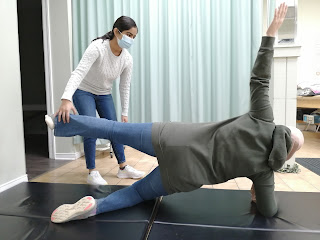Knee Injuries
Have you injured yourself in a soccer game by getting kicked right at the knee? Ouch! No need to say it could be very painful. A kicked and twisted knee could result in several structures injured. The severity of injury depends on the force and the position of the knee at the time of the accident. We are going to look at the possible medial (inner) knee structures damaged by the most common blow from the outside of the knee:
1. Medial Collateral Ligament and Anterior Cruciate Ligament
At the blow of the knee on the outside, the medial (inside) collateral ligament could be stretched so hard that it could inflame or even tear. The anterior cruciate ligament, which is located in the centre of the knee joint could get stretched very far and started to inflame or tear as well.
When the blow adds to a twist of the knee joint, the disc (soft bone lining the joint) could be irritated or torn at the impact. Thinning of the meniscus could happen with arthritis already and the injury causes the onset of pain.
The big quadriceps muscles could contract so hard and fast at the blow, the patella (knee cap) could get pulled so much into the femur (thigh bone) that the joint surface underneath the patella could get irritated and inflamed.
If that adds onto the aging effect of arthritis (joint surface thinning), the joint pain between the thigh bone and shin bone and the patellofemoral joint could be exacerbated in great folds.
4. Patellar or quadriceps tendonitis
At the forceful contraction of the quadriceps, tendon could be pulled against the impact so fast and result in tendonitis pain above or below the knee cap. Tear is not as likely at this location with this mechanism of injury.
There are other structures that could be damaged at the knee, such as the IT band insertion at the outside of the knee or the little coronary ligament sitting on top of the tibia (shin bone) right below the femur (thigh bone). They are not as likely to be injured in this mechanism of injury but other types of injuries such as twisting in a ski accident or jumping injury on a trampoline could inflame those structures. Sometimes repetitive bending of the knee from lifting could also result in the knee structures being inflamed. During the physiotherapy assessment, we will test each structure and identify the source(s) of pain and treat accordingly.
Trust your physiotherapist and we will help your body to heal properly and optimally!





had knee pain years ago, good to do exercises regularly as advised by a physiotherapist. with a brace to support, i can do everything now!
ReplyDeletethanks for sharing! great to know you got a physio to look at it! continue to keep it strong and flexible!
Delete